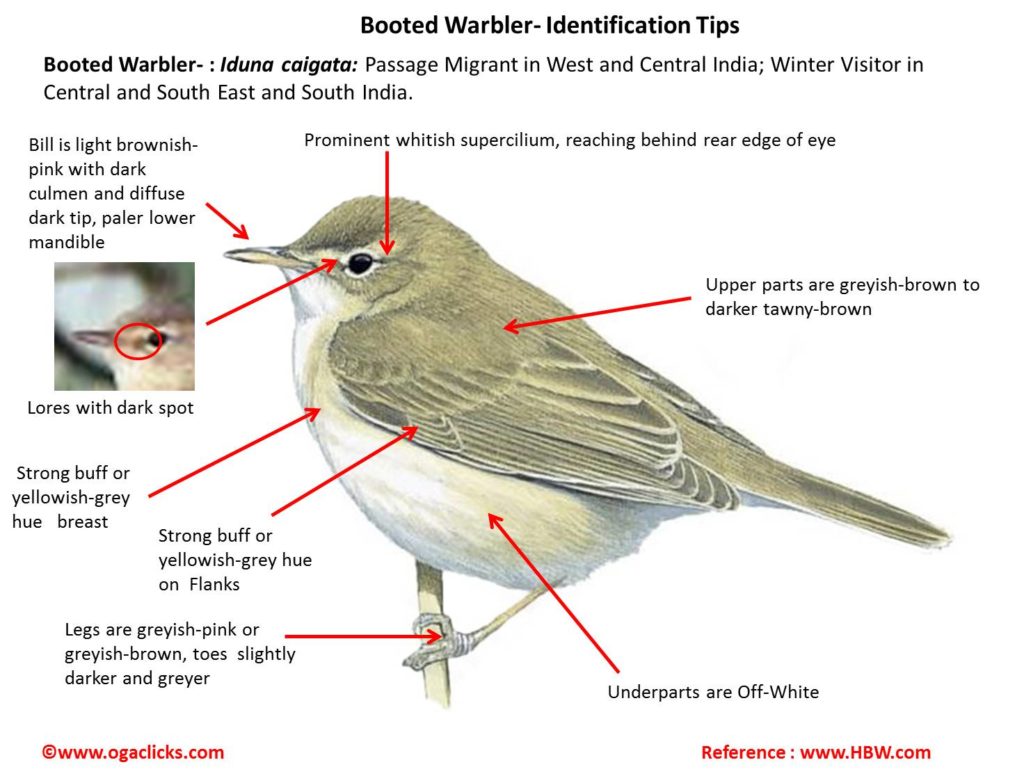Booted Warbler

Booted Warbler Iduna caligata
Etymology :
- Iduna : no specific meaning, most probable one is named after Norse goddess Iðunn
- Caligata: Latin word for “ booted” derived from caliga – boot
Vernacular Names : Guj: Rama fudki, Sita fudki, Kanta futki, Mal: Chinnanbheri, Mar: Paymoj Vatvatya
Distribution in India: Widespread Winter visitor in South East peninsular India and a passage migrant in parts of North West India.
Description: Size of 11-12cm.It is asmall Hippolais with short bill, rounded crown and rather short, square tail. It has prominent whitish supercilium reaching behind rear edge of eye, lores often with dark spot, dark brown forecrown enhance prominence of supercilium; plumage greyish-brown to darker tawny-brown above, becoming plainer and more greyish in summer); tertials and greater upperwing-coverts usually with visible contrast between dark centers and pale edges; primaries brown or a little darker, brown-grey; tail has diffusely paler edges and tips of outer feathers; off-white below, rather strong buff or yellowish-grey hue on breast side and flanks; iris dark brown; bill light brownish-pink with dark culmen and diffuse dark tip, but a few have slightly longer bill with paler lower mandible; legs greyish-pink or greyish-brown, toes often slightly darker and greyer.Both the sexes look similar.
Habitat : Found during breeding season in steppe with low scrub. In temperate zone utilizes overgrown pastureland, meadows with dense bushes and weeds.
Food Habits: It eats insects and other invertebrates as grasshoppers, bugs, cicadas and ant-lions, also moths and butterflies, caddis flies, various dipteran flies, hymenopterans,beetles,spiders and mites. It forages mainly in low scrub; seen to feed also, and often for long periods, on the ground, where it hops and runs quickly. Twitches tail upwards or to side, rarely downwards, while foraging and moving about.In non-breeding range, frequently forages in taller vegetation such as tamarisks and acacias, as well as in lower bushes.
Breeding Habits: They breed in May-Julyin Finland and Siberia.The nest is a well-built cup of plant stems, roots and soft twigs, placed on or near ground in dense undergrowth. They lay a clutch of 4–6 eggs. The incubation isdone by both sexes, either equally or with female doing more of the work for a periodof 12–14 days. Thefledging period is 12-14 days. The youngare fed by both parents.